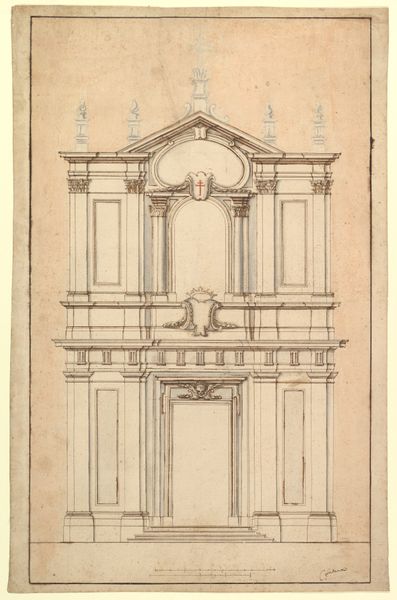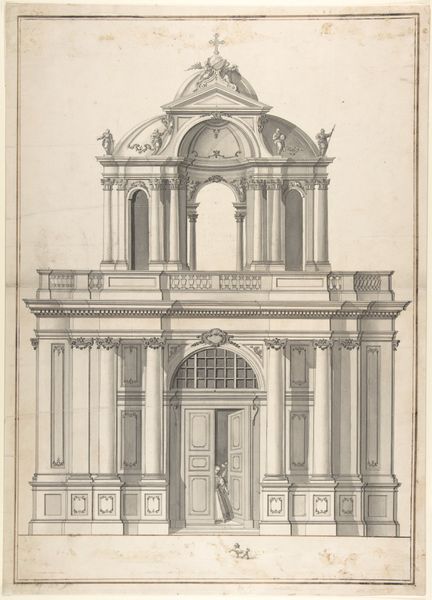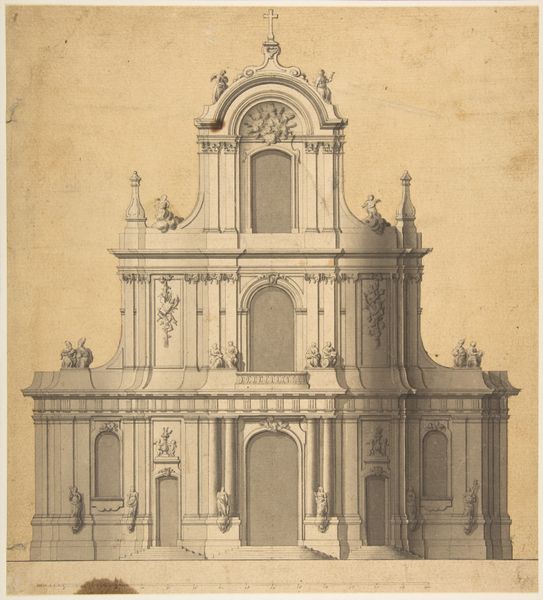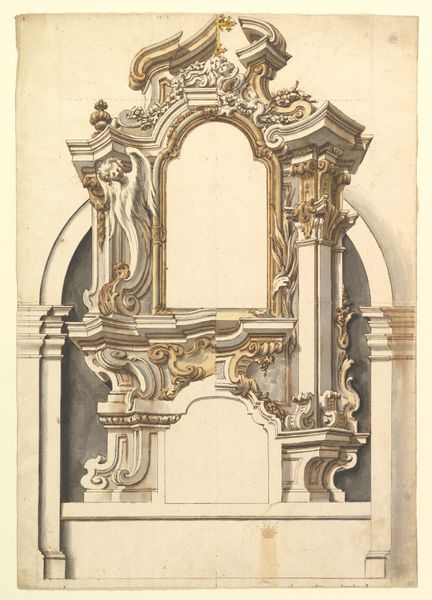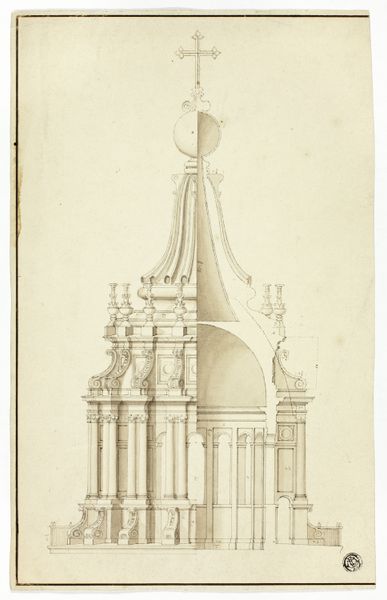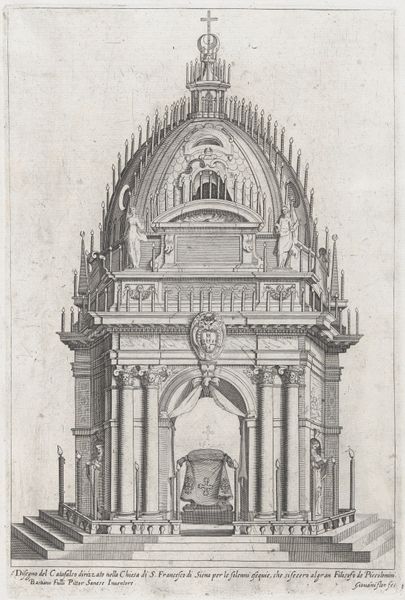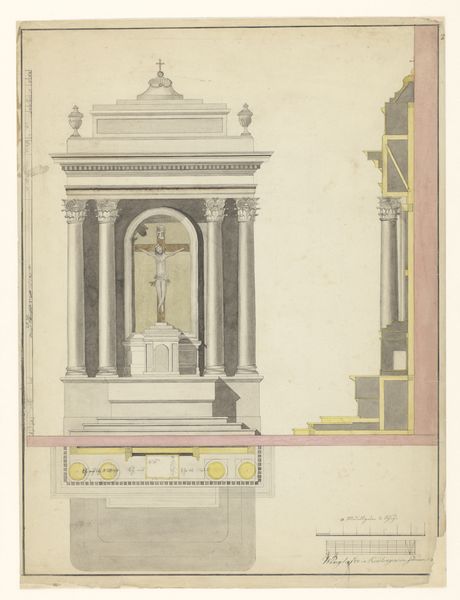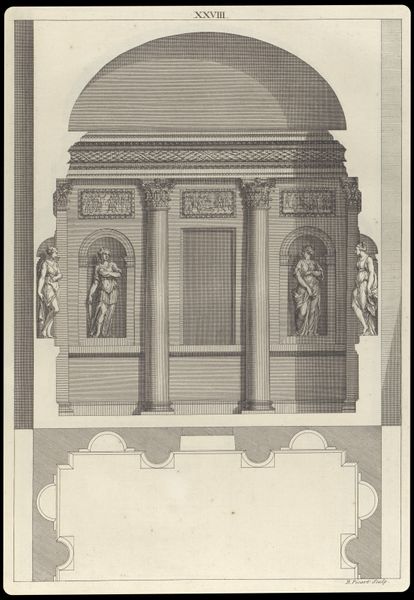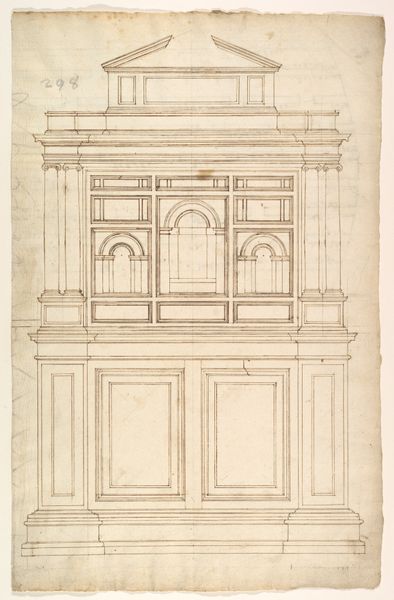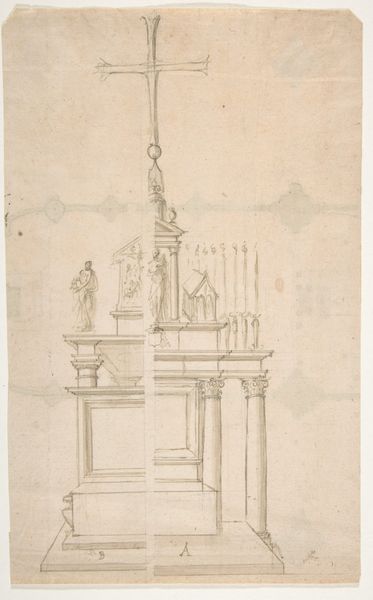
drawing, print, watercolor, architecture
#
drawing
#
neoclacissism
# print
#
watercolor
#
architecture
Dimensions: sheet: 18 7/8 x 14 3/16 in. (48 x 36.1 cm)
Copyright: Public Domain
Curator: Right now we're looking at "Plan and Elevation of an Entrance" created in 1793 by Giovanni Battista Galliani. It’s currently housed at the Metropolitan Museum of Art. It is a drawing combining print, watercolor, and architecture. Editor: First thought? This feels so…dreamy. Like a faded memory of a grand entrance that only existed in someone’s mind. There’s such meticulous detail, yet the colors give it a sort of ephemeral quality. It is neoclassical without any harshness. Curator: Precisely! Think about the context of Neoclassicism, its rigid rules… Galliani’s giving us the skeleton, but he's also adding flesh with the watercolour, softening the stone cold perfection. It’s more suggestive of power, perhaps, than overtly declaring it. What's interesting is that Galliani created it during a time when revolutionary fervor started to affect views towards architectural spaces that communicated privilege and hierarchy. Editor: Almost as if he is showing us how to make a palace more friendly and gentle! The use of shading and shadows isn't about depicting reality as much as it's about suggesting mood. Curator: And think about how this piece was received. These architectural fantasies, as they were often called, weren’t commissioned structures—rather they explored a tension: between revolutionary ideology, and a more gentle take on how civic structures and even domestic spaces might operate in the future. Editor: I find it interesting how the plan at the bottom anchors this grand design. It’s a reminder that all these glorious visions need a solid base, a material foundation. Otherwise, they are just…thoughts floating away, aren’t they? It makes you wonder about accessibility; who exactly is invited to pass through this gate? Curator: An essential question. Galliani offers, not necessarily accessibility for all, but perhaps for a privileged few who can interpret architectural ideals through both intellect and aesthetics, even envisioning more socially equitable alternatives. Editor: So, in the end, are we looking at the dream of a building, or the ghost of one? A gate to progress, or just another pretty wall? Curator: Perhaps a bit of both, eternally suspended in potential, reflecting shifting sociopolitical landscapes across centuries of reception.
Comments
No comments
Be the first to comment and join the conversation on the ultimate creative platform.
